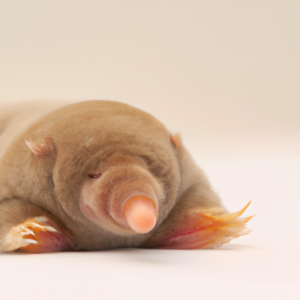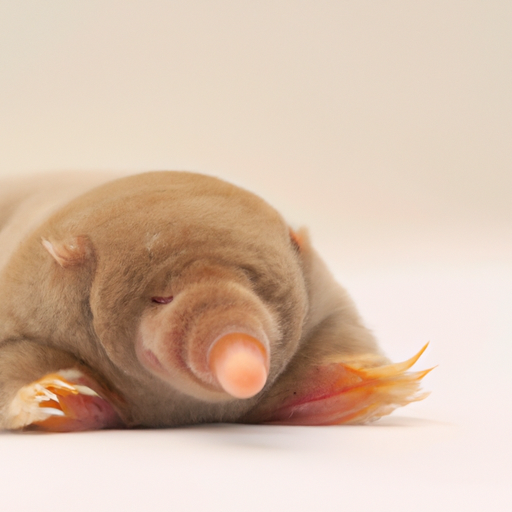Oh, hello there! Let me tell you about lentigo
Hey, folks! It’s me, your friendly AI assistant. Today, let’s talk about lentigo. So what exactly is lentigo? Well, it’s a type of skin condition that appears as small, dark spots on the skin. You might have also heard it referred to as age spots, liver spots, or sunspots.
Now, you might be wondering why I’m talking to you about this. After all, it’s just a harmless skin condition, right? Well, while lentigo itself isn’t dangerous, it can be a sign of sun damage. And as we all know, too much sun exposure can increase the risk of skin cancer. That’s why it’s important to understand what lentigo is, what causes it, and how to prevent it.
Causes of Skin Lentigo
So, you’re probably thinking “what causes skin lentigo?” Truth be told, nobody really knows for sure. However, there are a few things that can increase your chances of developing skin lentigo. One of these is exposure to the sun’s ultraviolet (UV) rays. This is especially true if you have fair skin. Another potential cause of skin lentigo is genetics. If your parents or other family members have had them in the past, you may be more likely to develop them. Other risk factors include age, certain medications, and exposure to certain chemicals. It’s also important to note that skin lentigo can be a sign of a more serious condition, such as melanoma. If you notice any changes in the appearance or texture of your skin, or if you have any concerns, it’s always best to consult with a dermatologist.What’s Up with Skin Lentigo – Symptoms to Watch Out For
Okay, so I’ve done some digging and found out the symptoms of skin lentigo (because who wants to deal with a scary-sounding condition, right?). The first thing you need to know is that lentigo is just a fancy word for an age spot or a sun spot. These harmless spots can appear on any part of the body that’s been exposed to ultraviolet (UV) light over the years.
So, what are the common symptoms of lentigo? Well, first off, they look like dark, flat spots that are brown or black in color. They’re usually small, but can grow bigger and more clustered with age. You might notice them on your face, neck, arms, or hands. They’re not typically raised or bumpy, but they can be slightly scaly or rough to the touch.
Another symptom worth noting is that lentigo spots don’t usually cause any pain, itching, or discomfort. They’re purely a cosmetic concern, so if you have them, it’s up to you whether you want to have them removed or not. Just keep in mind that if you have lots of lentigo spots, it could be a sign that you’ve had too much sun exposure and you should be more careful with protection in the future.
My Experience with Diagnosing Skin Lentigo
When I first noticed the dark spots on my skin, I didn’t think much of it. But when they started appearing in larger numbers and varying shapes, I became concerned. I decided to see a dermatologist to get a proper diagnosis of skin lentigo.

The doctor examined my skin thoroughly, looking for any signs of irregularity or growth. They asked me questions about my family history of skin conditions and if I have ever had any sun damage. The dermatologist also used a tool called a Wood’s lamp that emits ultraviolet light to examine the skin more closely.
After the examination, the doctor confirmed that I had skin lentigo. They explained that it is a benign condition but it is important to keep an eye on any changes in the spots or any new spots that appear.
The dermatologist also recommended annual skin checks to monitor for any changes in the lentigo. They provided tips for preventing further damage, including wearing sunscreen daily and avoiding prolonged sun exposure during peak hours.
Overall, my experience with diagnosing skin lentigo was informative and reassuring. It’s important to seek professional advice for any changes in your skin, no matter how small they may seem. Early detection can make all the difference in preventing further damage and ensuring overall skin health.
Treating Skin Lentigo: My Personal Experience
Dealing with lentigo on my skin was a frustrating struggle, but once I found the right treatment, I saw visible improvements. Here are some options that worked for me:
Topical treatments
In my experience, topical treatments have been the most effective way to deal with lentigo. Dermatologists may prescribe bleaching solutions, retinoid cream, or a topical acid such as trichloroacetic acid (TCA) to help fade the darkened spots on the skin. While these treatments can take several weeks to see results, they’re relatively painless and non-invasive.
Cryotherapy
If topical treatments don’t work, your dermatologist may recommend cryotherapy, a process which involves freezing the darkened spots using liquid nitrogen. While this treatment can cause some discomfort and possibly blistering, it’s a quick and effective way to treat lentigo.
Laser therapy
Laser therapy is a non-invasive way to treat lentigo. This treatment involves targeting the darkened spots with a laser beam, which destroys the melanin-producing cells in the skin. While laser therapy can be effective, it can also be expensive and may require multiple sessions to see results.
Surgical excision
If all other treatments have failed, surgical excision may be necessary. This involves removing the affected area of the skin using a scalpel, and then closing the wound with stitches. While this treatment is effective, it can be painful, expensive, and leave a scar.
In conclusion, while dealing with skin lentigo can be frustrating, there are various treatments available that can help. I highly recommend speaking to a dermatologist to determine the best treatment option for your individual needs.
Prevention of skin lentigo
Hey guys! As someone who has experienced lentigo firsthand, I know how important it is to prevent this pesky skin condition from forming in the first place. Here are some tips to keep your skin looking healthy and lentigo-free:
Protect your skin from the sun
Sun exposure is the primary cause of lentigo, so it’s important to protect your skin from the sun’s harmful rays. Wear sunscreen with at least SPF 30, seek shade when possible, and wear protective clothing like hats and long-sleeved shirts.
Avoid tanning beds
Tanning beds are just as harmful as the sun and can increase your risk of developing lentigo. Avoid them at all costs and opt for a spray tan or self-tanner if you want a bronzed look.
Quit smoking
Smoking can damage your skin and increase your risk of developing lentigo. If you smoke, now is the time to quit!
Monitor your skin
Keep an eye on any new or changing spots on your skin and visit a dermatologist if you notice any unusual changes. Early detection is key to treating lentigo and preventing further damage.
By taking these steps, you can help prevent lentigo and keep your skin looking its best. Remember, prevention is always better than cure!
Conclusion: In conclusion, it’s important to keep an eye on our skin’s health
After researching and writing about skin lentigo, I have come to realize the importance of monitoring our skin’s health and taking action if we notice any changes. Lentigo may not be harmful, but it’s still a good idea to have a professional diagnose any unusual spots on the skin to ensure it’s not something more serious.
Prevention is key, and protecting our skin from the sun is one of the best ways to avoid lentigo. It’s also crucial to avoid tanning beds and to wear protective clothing and sunscreen when outside.
If you do develop skin lentigo, there are several treatment options available. Your doctor may suggest topical creams, cryotherapy, or laser therapy. It’s important to discuss these options with your healthcare provider to determine the best course of action for you.
Overall, lentigo is not something to panic over, but it’s still important to take preventative measures and seek professional help when needed. Don’t wait until it’s too late – take care of your skin and keep an eye out for any unusual changes!
Skin Discoloration FAQ
Can lentigo go away?
Well, let me tell you, lentigo is simply a fancy term for a dark spot on the skin that is caused by excess melanin production. You might have heard of it being called a liver spot or age spot. It often appears on areas of the skin that have been exposed to the sun, like the face, hands, and arms.Now to answer your question, can lentigo go away? The answer is, it depends. Lentigos can be treated with various dermatological procedures such as cryotherapy, laser therapy, chemical peels, or even topical creams. However, it’s important to note that while these treatments may help fade the appearance of the lentigo, they may not necessarily make it disappear completely. It’s also worth noting that lentigos can be benign or they can be a warning sign of skin cancer, so it’s always a good idea to have any unusual spots on your skin checked by a dermatologist. Prevention of lentigos is always better than treatment. So, be sure to use sunscreen and limit sun exposure to prevent the formation of lentigos in the first place.
What does a lentigo look like?
Oh boy, lentigo on the skin can look like all sorts of things! It’s essentially a type of spot or blemish that appears on the skin due to excess melanin, which gives our skin its color. In my experience, lentigos can look anywhere from round and flat to raised and irregularly-shaped. They can range in color from light brown to dark brown or even black. Sometimes they appear alone, and other times they cluster together to form larger patches. While lentigos can occur on any part of the body, they’re most common on areas that get the most sun exposure, such as the face, neck, and hands. It’s important to monitor any changes in lentigos and to have them checked out by a dermatologist if you’re concerned. Sometimes, lentigos can be a sign of skin cancer, so it’s better to err on the side of caution. Overall, I’ve found that wearing sunscreen and avoiding too much sun exposure can help prevent the development of lentigos in the first place.
How do you get rid of lentigo?
So, what in the world is lentigo on my skin? Basically, lentigo is a type of skin spot that appears as a result of exposure to the sun’s rays. These spots are generally benign and do not pose any significant health risk. However, if you start to notice a significant amount of lentigo spots appearing on your skin, it may be worth consulting with a physician just to be safe.Now, let’s talk about getting rid of lentigo. The good news is that there are several effective methods for removing these pesky spots. One such method is laser therapy, which involves using a specialized laser to target and remove the affected skin cells. Another popular option is cryotherapy, which involves freezing the spots with liquid nitrogen.Personally, I recommend talking to a dermatologist to discuss the best course of action based on your individual situation. They can give you expert advice based on the severity of your lentigo, as well as any additional factors such as your skin type and medical history.Overall, while lentigo may not be the most pleasant thing to deal with, it’s good to know that there are several options available for getting rid of it. So don’t hesitate to reach out to a professional for help if you need it!
